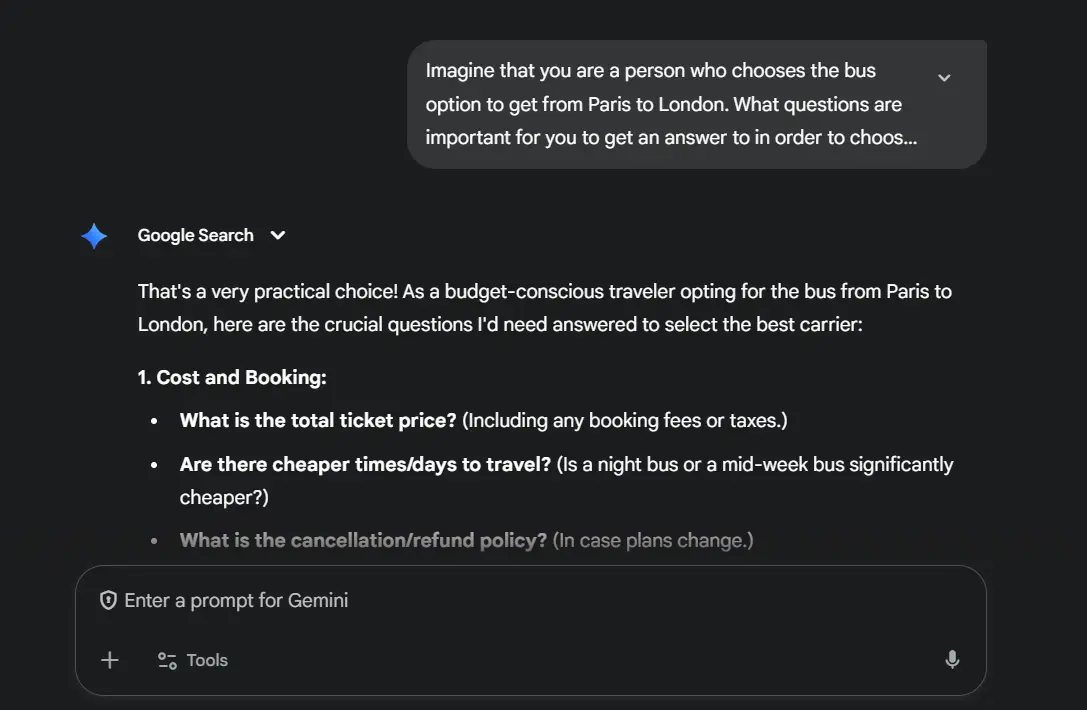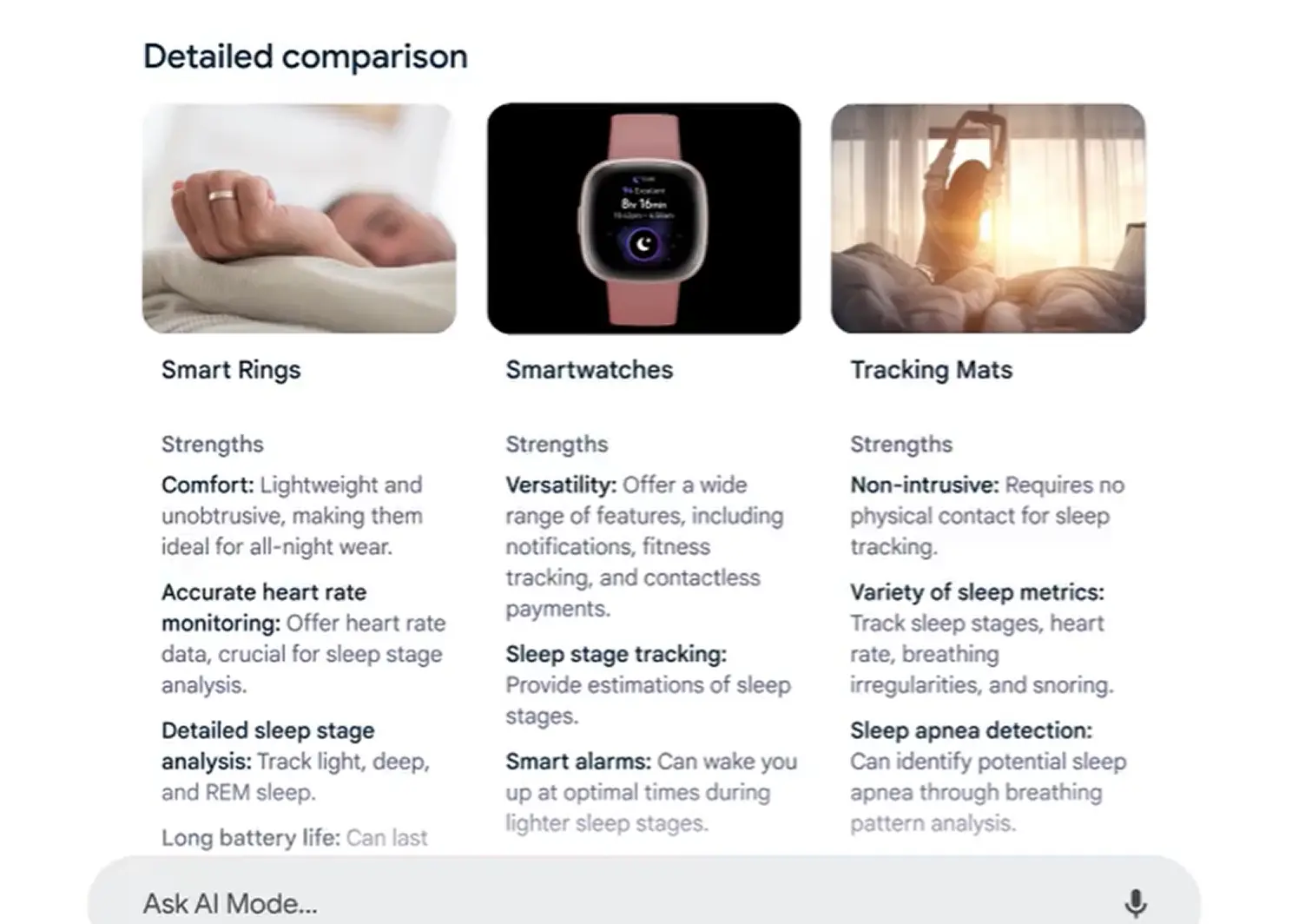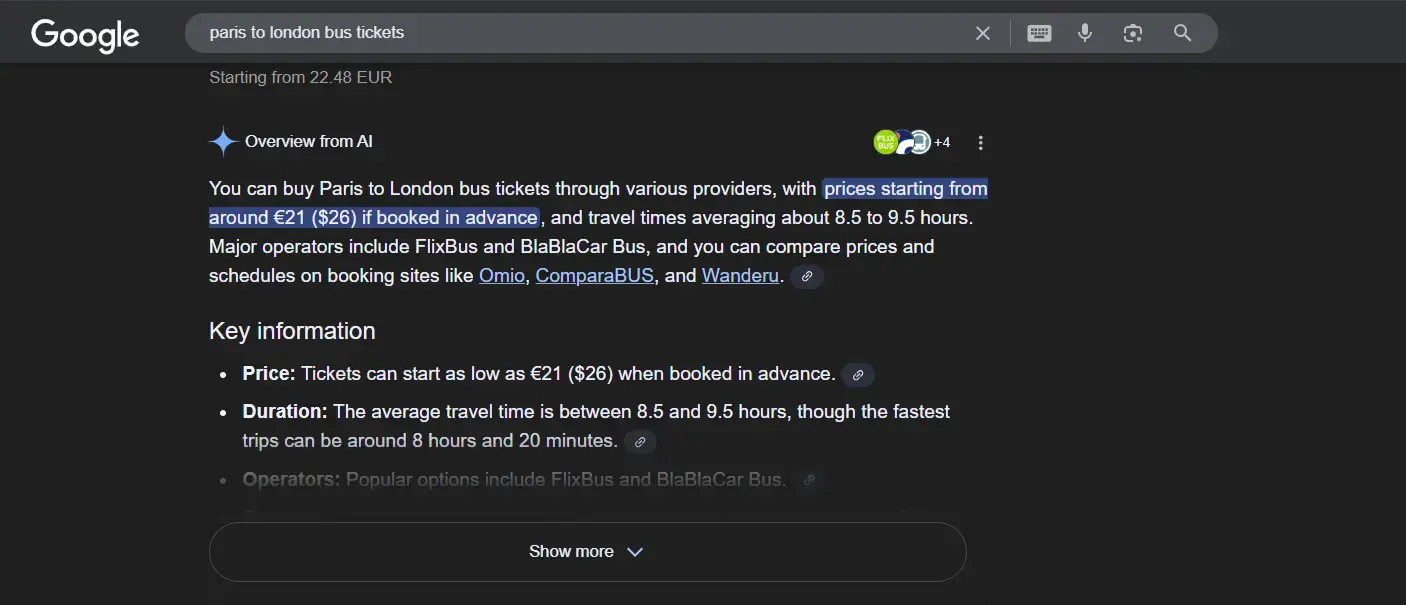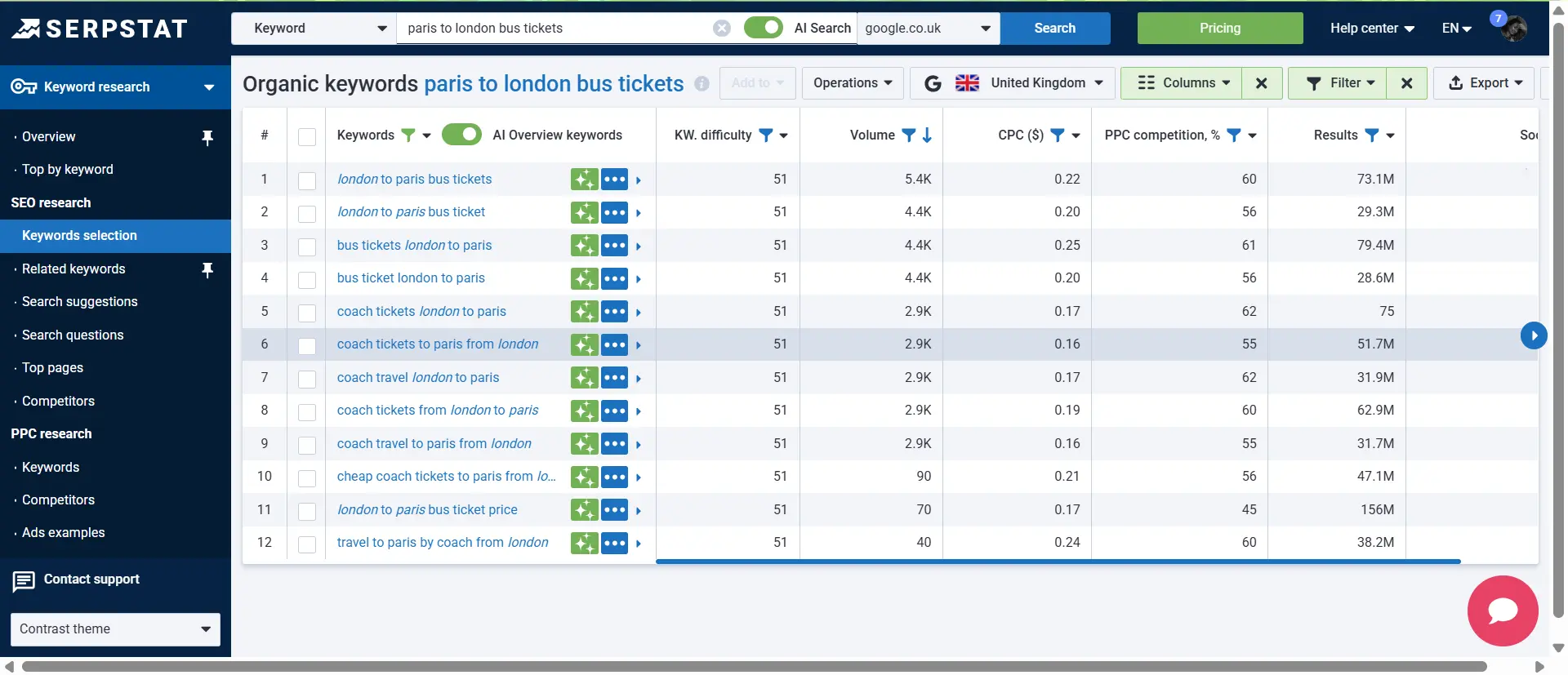This is a real revolution in information behavior, which website owners, marketers, and SEO specialists are already experiencing. At WordFactory, we are increasingly being asked by clients whether to ignore AI Overviews or, conversely, adapt to them. One thing is certain: traffic is no longer a guarantee but a reward for accuracy, well-thought-out structure, and valuable content. To keep up with the new reality, you need to understand how this technology works and how it changes the approach to promotion.
However, there is some unpleasant news. Kateryna explains:
"The biggest challenge with optimizing for AI Overviews and other LLM systems is still the lack of standard performance metrics. Traditional tools like Google Analytics can only show referral traffic from AI tools, such as ChatGPT — and even then, it requires advanced GA4 configurations to isolate that data.
We still can't directly track how often a website is referenced inside AI Overviews or how frequently it's mentioned by large language models. While some tools promise this, the results are often vague or unreliable.
So while the landscape is still forming, it's no longer completely dark — we now have tools that offer at least partial visibility into how AI systems perceive and reference your brand."

Fortunately, we're seeing new solutions emerge. For example, Serpstat has already introduced:
- AIO tracking in Rank Tracker
- Keyword research tailored for AI Overview
- A dedicated LLM Brand Monitor, which detects how your brand is represented in AI-generated answers.
AIO vs. SEO: Analytics No Longer Works as It Used to
In classic SEO, everything was relatively transparent: positions, clicks, conversions — a multitude of metrics that could be measured, analyzed, and used as the basis for a strategy. We knew which queries were driving our growth, where the traffic was coming from, and which pages were performing well. But with the advent of AI Overviews, everything has changed, and worst of all, the performance tracking system has literally disappeared.
This is a serious signal for businesses. The interaction funnel breaks down right at the start: the user gets an answer without visiting the site. Campaign planning has become more challenging: if it is impossible to accurately measure which efforts have been effective, it is difficult to optimize them. However, as Kateryna assumes, Google and OpenAI will soon release their analytical tools for tracking results.
Why Do Businesses Need to Understand AI Search?
Like any revolutionary technology, AI Overviews is both a challenge and a new growth point. Yes, the need for clicks is falling: according to various estimates, more than 50% of queries today are not accompanied by a transition to the site. This has had the greatest impact on information traffic. Kateryna shared the latest statistics: "70% of informational traffic has now shifted to queries to ChatGPT and other LLMs."
She is also confident that Google will actively develop AI Overview as a separate mode in the near future — AI Mode alongside Google Maps, Images, etc. It will be an interactive chat-based dialogue model. And this will further change how we interact with information on the Internet.
We are already observing such changes:
- Being at the top of search results no longer guarantees visibility. Even sites on the first page of SERP lose traffic if they don't make it into the AI Overview.
- The winners are topics with a high degree of personalization. Tourism, HoReCa, culture, history, education — anything where emotions, visual context, and engagement are important.
- If your site is included in the pool of sources for AI, this is a new peak of visibility. Our internal calculations show that a mention in the AI Overview can increase brand trust by 1.5–2 times even without clicking the link.
What Should You Do?
You should not just "make it to the top" but become a source that AI uses to build its answers. To do this, you first need to understand how neural networks work. There are two approaches: theoretical and practical. Our expert, Kateryna Zolotaryova, is ready to share her insights in both directions.
Theoretical approach
Where does AI overview get its information? Theoretical analysis requires delving into the relevant Google patents, as this is currently the only publicly available official source of information. For example, if you read this patent carefully, you will notice an interesting detail: in some cases, Google AI generates a response based on an existing knowledge base, while in others, it performs additional analysis of documents in the index for specific queries and generates a new response. This response can then be added to the permanent knowledge base — this is how the system learns.
The conclusion is that the system functions not only as a search engine AI but also as a learning system. That is:
- For common and standard queries, a ready-made, proven knowledge base is used.
- For new, rare, or situational queries, Google AI analyzes fresh content, creates a response, and possibly saves it as a new "fact."
Practical approach
Let's move on to practice. Here, our expert recommends paying attention to three main areas of work.
1. Content
The AI overview provides tips on content optimization. We enter our search query, for example, "bus Kyiv — Warsaw," and look at the specific content in the AI overview. We supplement our page with detailed and accurate information on all available points. It is essential to understand that this output may vary for each user at different times, so you should conduct this analysis repeatedly, at varying times and with different query formulations.
The AI overview is created and will develop as a conversational model, so to get into these search results for user queries, you need to place high-quality content on the site to be able to get into the Google database as a source of valuable thematic information.
Therefore, we return to the two general principles of SEO content: writing useful information for readers and producing content in an FAQ style. The latter does not necessarily have to be in a "question-answer" format; it can simply be a high-quality article that answers all possible questions on the topic for users. Gemini can be used to generate such possible questions, because Google AI overview works on its basis.
Let's look at an example. The query is "Paris to London bus tickets." The search results show the following information:
Accordingly, it is clear what we need to add to the content on our page:
- Details of online booking (including terms and conditions of purchase, ticket refunds, etc.);
- Price and what it includes;
- Discounts and conditions for obtaining them;
- Travel time, schedule, and other route details.
Another method is to make a request in conversational form in the AI dialog box. For example:

After analyzing the answers, add all the necessary information to the page.
In this case, Kateryna recommends using Gemini because Google uses this AI model to generate responses. But you can also explore this issue using ChatGPT or other systems and improve the information on this page based on them.
When placing content on the site, our expert adheres to the principle of distributing clusters across pages from classic SEO. The design strategy balances the "one intent — one page" principle with an analysis of Google's top results to group related query clusters onto shared pages. She also advises remembering clear H1–H3 headings, short paragraphs, lists, and markers — everything that both users and AI can easily scan and understand.
To find real user questions and keyword intent clusters, tools like Serpstat's Keyword Research plus Clustering can help identify what searchers want to know — even before AI Overviews pick it up. This data can guide your FAQ-style content and ensure it aligns with both user queries and search engine AI context.
2. Technical optimization
According to Kateryna, proper technical SEO is about maintaining a website's "hygiene." It must be optimized and free of errors, but the following parameters influence whether a website appears in AI search results:
- No website indexing issues, no 3**, 4**, and 5** server responses, correct sitemap, robots.txt, and meta robots tags.
- Site speed, Core Web Vitals indicators, and file compression methods.
- Structuring data using Schema.org microformats and JSON-LD. All possible website elements for which there is a corresponding markup must be marked up. And keep in mind that format libraries are constantly expanding.
- Mobile optimization and responsive design. Google AI Overviews are built into mobile SERP, so the site must be mobile-friendly and display quickly on any device.
3. External links
Here, our expert points out that it is necessary to separate links and site reputation — both factors influence the result. Links are important, but indirectly. They impact the overall authority of the domain and, consequently, its inclusion in the AI Overview. The aforementioned Google patent states that the model generates a response from sources selected for their authority and thematic relevance. If we analyze the sites that appear in the AI Overview snippet, they have a high DR.
It is also assumed that the site's presence in the "Best X"-articles positively influences its inclusion to the AI search. Still, such rankings must be published on authoritative sites and have organic traffic. In other words, the list must be compiled and published in a way that allows people to read it and trust it. Fake ratings on weak websites will not be helpful.
Implications
We agree with Kateryna that AI systems do not fundamentally change the approach to SEO. They change the way information is obtained and how users interact. However, the methods remain largely the same, with only a transition to the next level of quality. This is evolution, not a funeral.
Optimization for AI Overview does not exclude the promotion to the top of Google, as the AIO results often align quite closely with the top 10 results. It is impossible to definitively determine if the relationship is causal or due to shared factors influencing both classic top rankings and AI responses. However, it is reasonable to assume both mechanisms are most likely involved.



